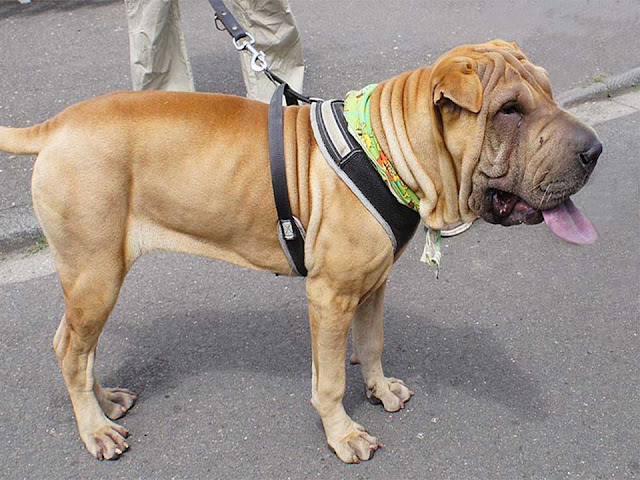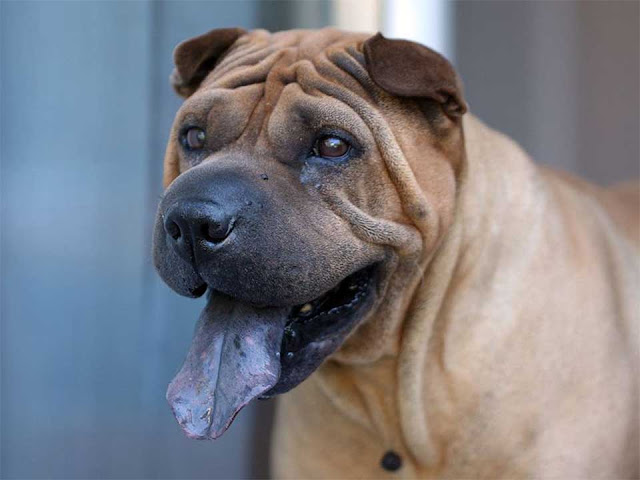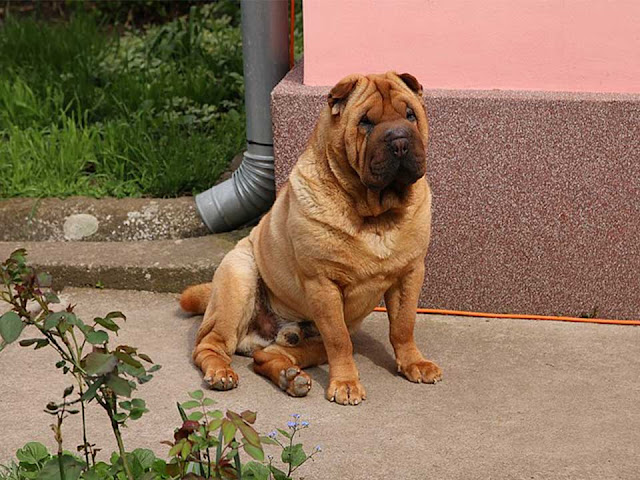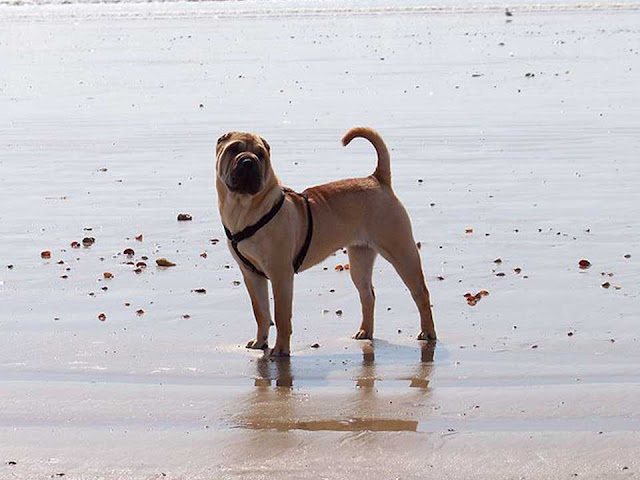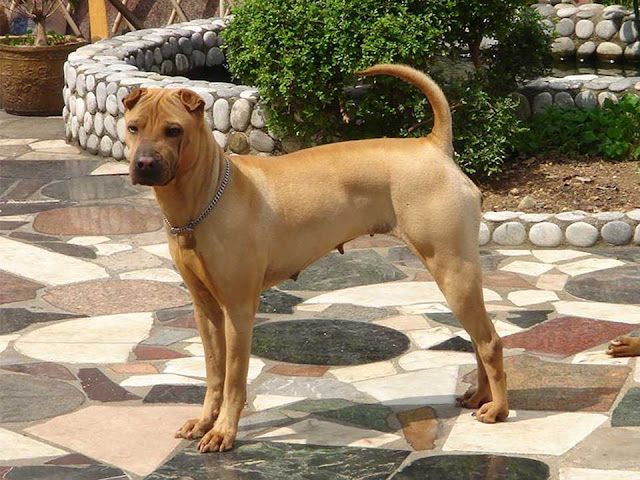Shar Pei
Shar-Pei is a dog breed, more famous for its deep wrinkles and a blue-black tongue. Shar Pei was originated from Canton (China) but it's English name is probably consequent from the British Cantonese “sā pèih” which decodes to "sand skin". As puppies, the Shar Pei has various wrinkles into their skin; but when matured, these wrinkles make sizeable.
Shar Pei was included in the world's scarcest dog breeds in 1978 by ‘Time magazine’ and ‘Guinness World Records’. Even though the breed has been recognized as a ‘Basal Breed’ that precedes the advent of contemporary breeds in the 19th century. Shar Pei was registered at # 134th in the breed list maintained by the American Kennel Club in 1992.
Shar Pei looks unique for its small, triangle ears, and a high-set tail. As per AKC standard 1998, Shar Pei has a thick tail but rounded at the base and narrowing to a fine point in shows. As puppies, the Shar Pei have numerous wrinkles than adults; even though some adults have various wrinkles, mostly on the face, some on the shoulder and base of the tail.
Wrinkles
The old-style Shar Pei is very common in China. The breed is very realistic to history. As puppies, they have many wrinkles, but as they get matured, they have fewer wrinkles.
Colors
Shar Pei has over 16 accepted colors as per the American Kennel Club standard. The coat should be solid in color, but spotted color (flowered coat), black or tan color is a disqualification. The recommended colors include black, blue, cream, red, fawn, red-fawn, sable, chocolate, apricot, and Isabella.
Coat
The Shar Pei has a horse-coat, rough, very prickly and off-standing, soft in one way and tough on the other. The breed was owned by the farmers for use in fields as working dogs or fighting dogs due to their loose skin. The western Shar Pei has three different coats; horse, brush, and bear. The horse coat is usually thought to be more active and persuaded to the dominant behavior than brush coat. The brush coat has marginally longer hair, smoother feel, and normally considered to be more of a "couch potato" than horse-coat.
Shedding
Shar Pei sheds usually twice a year.
Shar Pei Temperament
Shar Pei puppies need early socialization with the families especially the children, the strangers, and other pets at home. The Shar Pei is frequently suspicious of the visitors, which relates to their origin as a guard-dog. Generally, the Shar-Pei is very autonomous and a reserved breed. Though, Shar Pei is very dedicated, loyal and loving to its family and is agreeable to accepting strangers, if proper introduction and training are given at an early (young) age.
If not properly trained or socialized, the Shar-Pei can be a territorial and aggressive dog. Even friendly and well-trained dogs may have the characteristics of watch-dog; like barking at the strangers. It is, generally, a silent breed but barking only when playing or when they are anxious. Shar Pei was initially bred as palace-guard in China. Even though Shar Pei dogs are occasionally stubborn. They are interested in reasonable and compassionate training activities. The training should not be difficult, as they do not respond well to negative and harsh treatment. Shar Pei is a very loyal and affectionate dog, loving to its family. They do not like to be unaccompanied and prefer to be close to their owners. Mostly they like to accommodate in the same room.
History
Shar Pei has been recognized as a ‘Basal Breed’ that precedes the advent of modern breeds in the 19th Century. The breed comes from ‘Guangdong’ (the province of China). The original Shar Pei from China has a very different look from the breed now popular in the West (but this the breed has not been accepted) in southern China, Hong Kong, and Macau. The ‘Guangdong’ province in China was also a common trading-place during the Han dynasty, and it is uncertain if the Shar Pei was transported to China, or if it formerly was bred in China.
The loose skin and very prickly coat of Shar Pei was initially developed to help the dogs fend off wild-boar when they were used to hunt. Later, the breed was used for dog-fighting; these improved characters made Shar Pei difficult for its opponent to grab and hold on to, and so that if it did manage to grasp, the Shar Pei would still have opportunity to move and bite back. When grabbed by any loose wrinkle, a Shar Pei can really twist in their skin and face in their adversary's direction. In fighting, they would twist in their skin to bite the attacker’s back.
During the Communist Revolution, when Shar Pei’s production was decreased dramatically, the dogs were rescued by a Hong Kong businessman named ‘Matgo Law’ who appealed Americans, in 1973, to save the breed. Thus, around 200 Shar Peis were smuggled into America. The current American Shar Pei population stems mostly from these original 200 Shar Peis.
Also see: Cute Pictures of Shar Pei Puppy
